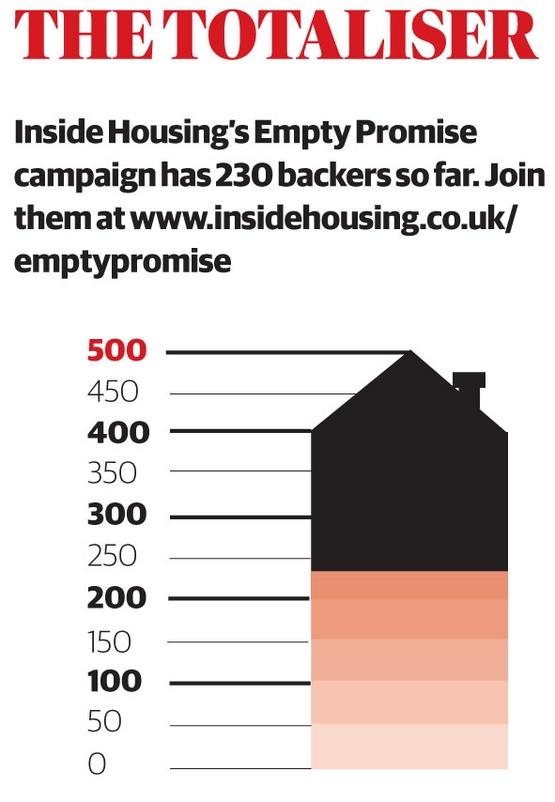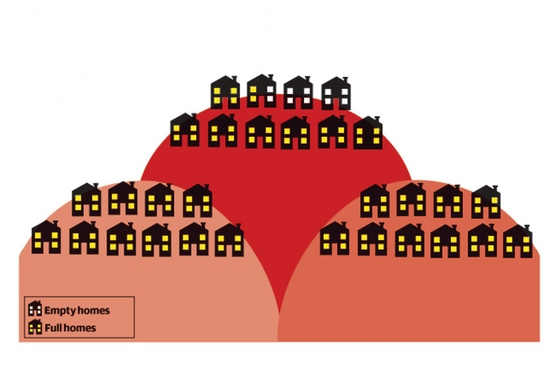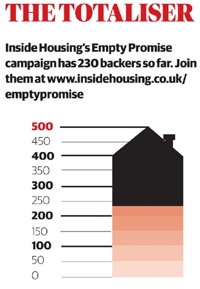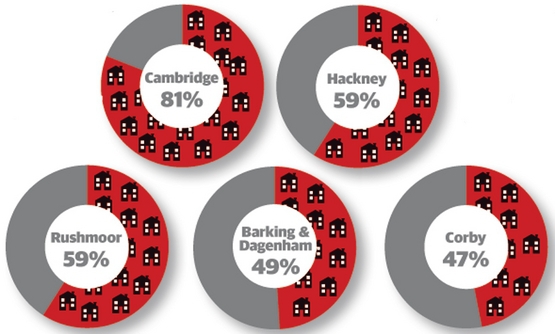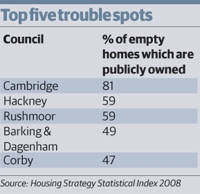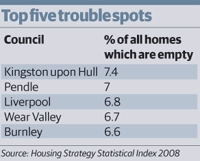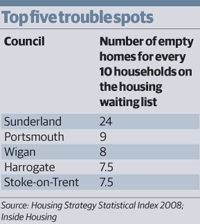Why are there 2.4 empty homes for every household on the waiting list in Sunderland?
Caroline Thorpe examines the latest government figures to find out, and considers the local problems in Hull and Cambridge that contribute to a national blight

The national picture isn’t pretty: more than 943,414 empty homes in the UK and rising.
In case you missed it - first in Inside Housing when we launched our Empty Promise campaign in January, and recently when the Tories and Liberal Democrats realised empty homes were a blight worth fighting - the Empty Homes Agency predicts that number will soar to 1 million this year.
The Empty Promise campaign aims to help councils and housing associations get those vacant properties back into use, and so far has 230 backers.

This month the government released its latest empty homes statistics, revealing that between 2007 and 2008 the number of empty homes in England leapt by 25,000 - the biggest increase in 17 years.
The numbers come from the 2008 Housing Strategy Statistical Appendix, data that is supplied annually by England’s councils.
But what about the local picture? Slice and dice those same figures and there are some shocking results: 7.4 per cent of all homes in Hull are empty; in Cambridge a massive 81 per cent of empty homes are owned by the public sector homes - those owned by the council, housing associations and ‘other public bodies’; and in Sunderland, for every household on the official housing waiting list there are 2.4 vacant homes.
The question begs to be asked: why? Which is what we asked the table toppers.
For more information about Inside Housing’s Empty Promise campaign see our campaign page, where you can express your support by signing our petition. You can see full details of the scale of the problem using the tables on the right of this article.
All homes

The place Hull Council
Total homes 116,184
Empty homes 8,640 (7.4 per cent)
Empty homes strategy Yes
Dedicated empty homes officers One, full time
What the council says:
‘It’s fairly obvious,’ says Hull’s head of housing John Hocking, when asked to explain why more than seven in every 100 homes in his city are empty. ‘The floods.’
More than 8,000 properties were affected when Hull was deluged in the summer of 2007, with the private sector worst hit. He adds that 400 households remain in caravans, living on first floors or with friends.
He adds that the 8,640 empty homes reported in the government’s official statistics no longer stands. In December 2008 Hull counted 7,473 -
6.4 per cent of the total stock.
Mr Hocking believes that the local market renewal pathfinder has also inflated the vacant property count, as homes await demolition.

Public sector homes

The place Cambridge Council
Total homes 46,611
Empty homes 371
Empty homes that are publicly owned 81 per cent
Empty homes strategy Yes
Dedicated empty homes officers None
What the council says:
The overwhelming majority of unused homes nationally are privately owned, so why is Cambridge by far the worst performer on this measure?
Housing strategy manager Helen Reed explains that the damning statistic is the result of under-reporting of the number of private sector empty properties. According to the official figures there are 72 empty homes.
‘Seventy-two is the figure identified in our stock conditions survey in 2002,’ says Ms Reed.
In fact, she says, according to council tax returns gathered earlier this month, there are a whopping 1,284 empty private homes in the university town. That puts the 299 council and housing association empty homes - none of which are ‘long-term empty’ reckons Ms Reed - at a mid-table 18 per cent as a proportion of all empties, alongside councils such as Birmingham and Southampton.
‘It would help if we had a very clear definition of what is an empty home [for example, does it count second homes?],’ adds Ms Reed. ‘If [the
numbers] are being reported differently elsewhere I’d be happy to have a look at what we do.’

Empties to Waiting list ratio

The place Sunderland City Council
Empty homes 5,343
Housing waiting list 2,235
Bottom line 24 empty homes for every 10 households on waiting list
Empty homes strategy Yes
Dedicated empty homes officers Two, full time
What the council says:
‘What you’ve got to take into account on this one,’ says head of housing Alan Caddick, ‘is that [housing association] Gentoo is the main social landlord in the area and it has 16,000 on its waiting list. So in total [the city’s waiting list] is something like 18,000.’
Which - not accounting for duplication between the lists - would mean two and a bit homes for every 10 households awaiting housing.
Still, 5,343 is not a slight number of empties, even in a city where the housing stock totals 124,170.
According to Mr Carrick, there’s plenty being done about that.
‘We aim to bring back 369 [homes] this [financial] year, that’s private sector only. We’re on target to do that - 320 with six weeks to go,’ he says.
He adds that a ‘massive number’ of the 1,483 housing association empties in his area are ‘undergoing renewal, so the actual number that are empty and available to let is significantly lower’.

Additional research by Gene Robertson
